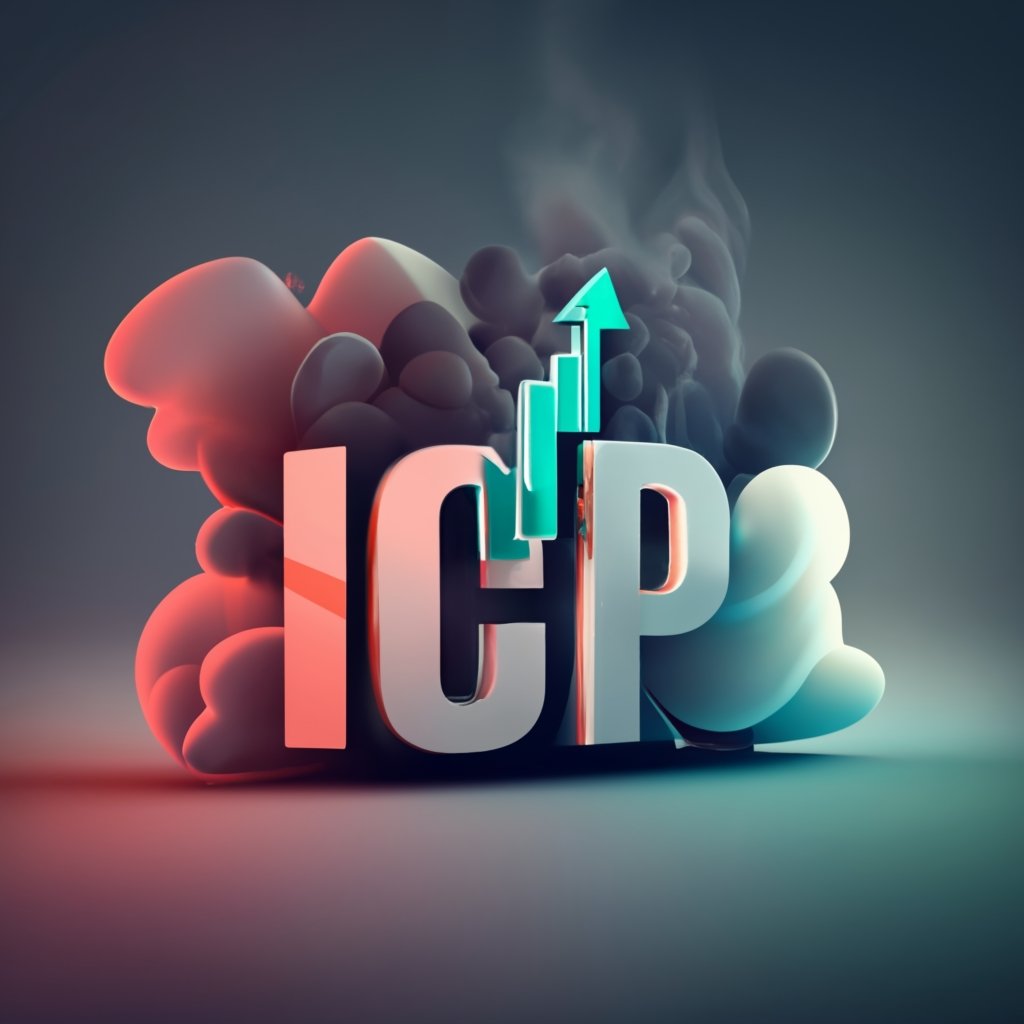Ideal customers don’t just fall into your lap. Targeting and engaging them requires detailed customer insight and strategy. This complete guide will walk you through the crucial process of developing ideal customer profiles (ICPs) to laser focus your sales and marketing efforts for growth. Learn how to leverage ICPs as the cornerstone of winning more deals with qualified accounts.
An ideal customer profile (ICP) is a detailed overview of your perfect target customer. It goes beyond basic demographics to include all the key characteristics that make certain prospects a great fit for your product or service.
In other words, an ICP is a “buyer persona” on steroids – a holistic representation of the ideal accounts you want to win as customers. Developing accurate ICPs is crucial for focusing your sales and marketing efforts to drive growth.
This section will cover everything you need to know about ideal customer profiles, including:
- What an ICP is
- The concrete benefits of having a strong ICP
- How an ICP differs from a basic buyer persona
- Steps to build your ideal customer profile
- Best practices for creating detailed, robust ICPs
What Exactly is an Ideal Customer Profile?
An ideal customer profile is a detailed description of your perfect customer. It includes firmographic, demographic, and technographic attributes that makes them predisposed to buy from you.
An ICP goes much deeper than surface-level traits to uncover motivations, challenges, and buying criteria. It helps you understand what truly drives customers’ decisions when it comes to your product.
Some examples of core elements in an ideal customer profile:
- Company size and industry vertical
- Location and revenue
- Tech stack and workflows
- Growth goals and pain points
- Purchasing process and deal size
- Buying committee and key decision makers
- Evaluation criteria and objections
Your ICPs will likely break down into a few target personas that represent your best-fit prospects (more on segmentation later).
But the main goal is to paint a complete picture of the customers you want to win in the future based on the attributes of your current ideal clients.
Having clearly defined ICPs is like having an internal roadmap guiding your go-to-market strategy and sales execution.
Why You Need to Invest in Building ICPs
Many companies rely on generic buyer personas or outdated target account profiles. But in today’s hypercompetitive markets, that’s not enough.
Building detailed ideal customer profiles is critical for any B2B company aiming to accelerate growth through precise outreach and messaging.
Here are some of the key benefits of developing comprehensive ICPs:
Laser Focus Your Outbound Prospecting
An ICP helps sales teams instantly recognize the best potential customers to prioritize. Instead of ineffective spray-and-pray tactics, reps can take a targeted rifle approach.
Personalize Messaging and Positioning
Knowing your ideal customer inside and out enables you to craft messaging that resonates. You can tailor content, campaigns, and collateral to align with their motivations and address key pain points.
Double Sales Funnel Conversion Rates
With an ICP guiding lead scoring and sales qualification, you can focus energy on prospects truly likely to convert rather than wasting time with low-potential leads.
Slash Customer Acquisition Costs
Targeting only well-fitted prospects means shorter sales cycles, less time spent per deal, and lower acquisition costs. An ICP drives sales efficiency.
Reduce Churn Rates
Accounts that match your ideal customer profile have higher retention rates. With an ICP, you can avoid taking on mismatched customers prone to churn.
Inform Product Roadmaps
Knowing your ideal customer inside and out ensures you build products tailored specifically to their needs and workflows.
How an ICP Differs from a Buyer Persona
Ideal customer profiles and generic buyer personas serve related but distinct purposes. While there is some overlap, ICPs include much more comprehensive detail around the ideal accounts to target.
Buyer personas are fictional representations of the various types of customers who buy from you. They usually include basic demographics, some background context, and high-level psychographic info.
ICPs take this much further by compiling the firmographic, demographic, and technographic traits of your very best-fit existing accounts.
Buyer personas help inform content strategy, messaging, and marketing. ICPs function more as an ideal blueprint for your sales team.
While personas represent categories of buyers, an ICP represents your single best customer. Both are important frameworks, but serve different core functions.

Steps to Build Your Ideal Customer Profile
Now that you understand what an ICP is and why it matters, let’s explore the process for creating one. Follow these steps:
Step 1: Analyze Current Customer Data
Your starting point is looking at your existing customer accounts, particularly your most highly valued customers. Analyze attributes like:
- Industry, location, company size
- Budget, deal size, buying process
- Role titles, tech stack, workflows
- Growth drivers, business challenges
Crunch historical CRM and marketing automation data to uncover patterns within your best accounts. Look for common characteristics you can extract.
Step 2: Identify Your Best-Fit Customer Attributes
Once you’ve analyzed your accounts, you can begin isolating the attributes that make certain customers a particularly strong match.
Imagine your absolute perfect customer. What are the core factors that would make them predisposed to buy from you and get excellent ROI from your offering?
These attributes may span firmographics, technographics, psychographics, and more.Outline the key characteristics.
Step 3: Create Fictional ICPs Representing Perfect Customers
Next, lump your ideal attributes together into 1-3 fictional ideal customer profiles.
Give each one a descriptive name and detailed background. Fleshed-out ICPs might include:
- Company overview, location, size metrics
- Specific industry, niche, growth goals
- Organizational structure, buying committee
- Relevant workflows, pain points, purchasing needs
- Product usage context, required integrations
- Evaluation and purchasing processes
Make your ICPs as robust as possible encapsulating your perfect buyer. They should guide sales targeting and personalization efforts.
Step 4: Define Target Market Segments Based on ICPs
With detailed ICPs created, you can define the specific market segments, divisions, or types of accounts you want to pursue.
For example, you may have:
- Enterprise ICP: Large, global accounts
- Commercial ICP: Mid-market, regional accounts
- SME ICP: Small/medium businesses
Each segment will have slightly different attributes, buying criteria, and sales approaches. But they will all align to your core ICPs.
Best Practices for Creating Detailed ICPs
To develop the most effective ideal customer profiles, keep these proven best practices in mind:
Include Robust Firmographic, Demographic, and Psychographic Data
The most well-defined ICPs incorporate all relevant firmographic, demographic and psychographic dimensions.
Include statistical attributes like company size, location, revenue growth, industry vertical, tech stack, and more.
But also capture the psychological nuances, motivations, values, and priorities of your ideal buyers.
Specify the Geographic Region, Ideal Company Size, and Industry Verticals
It’s not enough to say your ICP is medium-sized companies. Drill down into specifics like:
- Location: Northeast U.S.
- Company Size: 150-500 employees
- Industry Verticals: Manufacturing, construction
These kinds of details enable hypertargeted outreach. Get granular.
Note Their Core Buying Motivations and Biggest Pain Points
Detail the reasons your ideal customers buy your type of product along with the problems they aim to solve. These psychographic dimensions enable personalized messaging that really resonates.
Identify Their Purchasing Processes and Average Deal Size
Know how your ideal accounts make buying decisions and their typical deal terms. This equips sales teams to guide prospects through their native purchasing workflows.
Continuously Improve ICP Accuracy Over Time
An ICP is not a static document. Revisit and refine it on an ongoing basis as you gather more data and learn about evolving customer needs.
Investing the effort to build robust ICPs pays major dividends in the form of faster sales cycles, higher win rates, and lower acquisition costs. Follow the steps above to start honing in on your ideal targets.
Now that you’ve built comprehensive ideal customer profiles (ICPs), it’s time to leverage them across your sales and marketing activities.
An ICP shouldn’t just sit in a document somewhere collecting dust. To maximize its impact, you need to actively apply it to focus your outreach and personalize engagements.
This section will cover proven ways to integrate ICPs into your day-to-day sales and marketing operations, including:
- Using ICPs to identify and prioritize target accounts
- Crafting tailored messaging and content based on ICP psychographics
- Customizing sales plays for each persona
- Continuously improving ICPs over time as a “living document”
- Recording ICP data digitally within your tech stack
- Automating lead scoring and routing based on ICP factors
- Building highly-targeted account-based marketing campaigns
- Enabling sales teams via ICP training and coaching
Let’s explore tactics to help you get maximum mileage from your ideal customer profiles.

Focus Prospecting Efforts on High-Value Matches
The most basic way to apply your ICP is prioritizing outreach to accounts that closely match the profile.
Your sales team should continuously source leads and filter prospects through the lens of your ICPs to identify hot targets worth pursuing aggressively.
Marketing can also drive targeted advertising, content syndication, and messaging to engage high-probability accounts. Focus on attracting and capturing the interest of your ideal buyers.
For example, you may want to sponsor tradeshows your ICPs are likely to attend or advertise on the publications they read. Get your brand and messaging in front of your perfect prospects.
Craft Tailored Messaging Based on Psychographics
Now that you intimately understand your ICPs’ motivations and pain points, use these insights to inform messaging.
Draft value propositions, campaigns, ads, and content tailored specifically to resonate with your target buyer psychology.
Speak directly to the business challenges your ideal customers face. Position your offering as the perfect solution for them, using the terminology and framing that will click.
You have a blueprint of exactly how your ideal customers think and what matters most to them. Put yourself in their shoes as you craft tailored messaging.
Customize Sales Plays for Each Target Persona
With detailed ICPs, your sales reps understand the specific types of accounts they should be pursuing.
But you can take it a level deeper by creating targeted sales plays tailored to the attributes of each persona.
Your enterprise ICP may require an elongated, complex sales cycle involving multiple stakeholders.
Whereas your commercial ICP may be more autonomous decision makers who value speed and convenience.
Build customized sales workflows, demo strategies, and messaging around the distinct preferences of each persona. Help your customer-facing teams engage different profiles in the ideal way.
Continuously Refine Your ICPs Over Time
Treat your ICP as a dynamic document that continuously evolves as you gather more customer data and feedback.
Set reminders to revisit your ICPs every quarter or six months. Look for ways to make them more accurate and complete.
As your product and market change, your ideal customer likely will too. Make sure to keep your ICP updated, so it remains a relevant asset.
Record ICP Data Digitally Within Your Tech Stack
To maximize usage, document your ICP framework digitally within your core sales and marketing technology stack.
Most CRM platforms provide a way to create ideal buyer profiles and attach relevant data to account records.
Your marketing automation system may also allow creation of custom lead or account scoring models based on ICP matching.
Embed ICP factors across your platforms, so this insight can guide workflows at scale.
Automate Lead Scoring and Routing Rules Based on ICP Criteria
With your ICP data incorporated digitally, you can begin using it to automatically score inbound leads and route them accordingly.
Set up workflow rules that assign higher scores to leads matching key ICP attributes like industry, company size, tech stack, etc.
And create conditional routing logic to fast-track high-scoring ICP leads to sales reps. While diverting non-match leads to lead nurturing streams instead.
Marketing automation powered by ICPs results in faster sales cycles and higher conversion rates on qualified accounts.
Build Targeted Account-Based Marketing Campaigns
Your ICPs likely identify certain industries, cohorts, or types of accounts as higher-value targets for your solution.
Leverage these insights to get hyper-targeted with your outbound campaigns and messaging.
Use ICP factors like industry, size metric ranges, tech stack data, and more to build segmented account lists for targeted campaigns.
Then craft tailored messaging and collateral designed specifically to resonate with each targeted segment.
Equip Sales Teams Via ICP Training and Coaching
For your sales reps to fully leverage your ICPs, they need to understand them intimately.
Provide formal training walking through the ICP framework and how to apply it in day-to-day targeting and engagement.
Coach reps on using ICP factors to qualify and segment prospects. Help them master tailored messaging for each persona.
An ICP only provides value when effectively adopted by frontline sales teams in their interactions and workflows. Invest in enablement.
Sample ICP Applications
To illustrate how ICPs can be applied across sales and marketing, here are a few examples:
- Sales prospecting focused on accounts in the locations, industries, and size ranges outlined in ICPs
- Tradeshow sponsorships targeted to events well-attended by ICP personas
- Personalized multi-touch campaigns with messaging tailored to ICP psychographics
- Custom sales playbooks for enterprise vs. mid-market vs. commercial accounts
- Lead scoring models giving automated points for ICP match factors like revenue and industry
- Account-based advertising campaigns focused on ICP industries and firmographics
- Rep coaching on how to tailor messaging and sales cycles for each persona
The use cases are nearly endless. When fully adopted, ICPs guide and optimize huge areas of sales and marketing.
Just be sure to constantly measure performance and refine your approach over time. ICPs are most powerful when implemented intelligently at scale.
Developing comprehensive ideal customer profiles (ICPs) is a challenging process. It takes effort to build ICPs that accurately reflect your best-fit accounts.
Many organizations stumble in creating truly effective ICPs. They make critical mistakes that undermine the quality and usefulness of their profiles.
This section will overview common ICP pitfalls to avoid, including:
- Relying too much on job titles versus psychographics
- Building too many narrow, niche ICPs
- Failing to collaborate across marketing, sales, and service
- Not continuously updating ICPs to reflect new learnings
- Frequently asked questions about ideal customer profile best practices
Plus, we’ll provide sample ICP templates and examples you can reference.

Mistake #1: Focusing Too Much on Job Titles Rather Than Psychographics
One of the biggest ICP mistakes is concentrating too much on job titles and demographics without capturing psychographic dimensions.
For example, an ICP may specify that it targets CXOs and VP level roles at Fortune 500 retail brands.
While job titles and company size are helpful, they don’t provide a complete view of the buyer psychology behind purchasing decisions.
Ideal profiles should capture the motivations, values, concerns, and priorities influencing their buying process.
Go beyond surface-level attributes to understand your ideal customers’ mindset. These psychographics enable personalized engagement.
Mistake #2: Creating Too Many Narrowly Focused ICPs
With so many tools for segmentation available today, it’s tempting to slice and dice your market into tiny niches.
But trying to build hyper-targeted ICPs for every conceivable persona often backfires.
Maintaining numerous narrow ICPs strains resources. And it can be challenging to create truly tailored content and campaigns for each one.
Instead, identify just 1-3 core ICPs representing your major buyer types. Seek balance in segmentation.
Mistake #3: Failing to Involve Cross-Functional Stakeholders
Many organizations task a single team with developing ICPs in a siloed manner.
But best-practice framework development compiles diverse expertise from across your company.
Be sure to actively involve stakeholders from sales, marketing, service, product management, and any other relevant departments.
This cross-functional participation will result in much richer perspectives within your finished ICPs.
Mistake #4: Not Regularly Evolving Your ICPs
Finally, a major mistake is treating ICPs as a one-and-done exercise. Static ICPs lose relevance over time.
Markets change. Buyer needs change. Your products change. All impacting your ideal customer.
Build a process for continuously reviewing and refreshing your ICPs at least annually. Treat them as living documents.
If you aren’t actively maintaining your ideal profiles, they become outdated and unreliable.
Frequently Asked Questions About ICP Best Practices
To summarize key lessons around optimal ICP creation and maintenance, here are answers to some common questions:
How Many ICPs Should Your Business Have?
Most experts recommend 2-4 robust ICPs segmented by your major buyer types. Avoid too much niche fragmentation but also personalization through broader grouping.
What’s the Difference Between an ICP and Buyer Persona?
ICPs focus specifically on your ideal customer attributes. Personas represent general categories of buyers. Think of ICPs as ‘unicorn’ accounts.
What Data Should You Include in an ICP?
Capture robust firmographic, demographic, technographic, and psychographic details. Quantitative and qualitative data provides a 360-degree view.
How Often Should You Update Your Company’s ICPs?
Revisit ICPs at least annually but ideally quarterly. Markets change quickly. Continuously refine them as you gather more customer insights.
ICP Templates and Examples
For added context, here are a few sample ICPs you can reference:
ICP Template Outline
- Company Overview: Location, Size, Revenue
- Industry & Sub-Vertical
- Growth Stage
- Technology Stack
- Key Roles & Buying Committee
- Values & Motivations
- Common Pain Points
- Purchasing Process
- Evaluation Criteria
B2B SaaS Company ICPs
- Emerging Startup: Early-stage tech companies, <$5M revenue, leaning into rapid growth
- Commercial Mid-Market: Established national brands, $50-500M revenue, focused on digital transformation
- Enterprise: Large multinationals, 5000+ employees, complex procurement processes
B2C Healthcare Company ICPs
- Wellness Mom Susan: Suburban mother of two children under 10, values holistic wellbeing
- Senior Explorer James: Recently retired single man, fixed income, active traveler seeking affordable care
- Career Driven millennial: Early 30s urban professional without children, priority on convenience
Avoiding common missteps, collaborating cross-functionally, and continuously improving your ICPs over time leads to maximum impact. Use the lessons in this section to build top-quality ideal customer profiles.

Key Takeaways on Developing Ideal Customer Profiles
Creating detailed ideal customer profiles is crucial, but also challenging. This comprehensive guide provided key steps to build ICPs that supercharge sales and marketing.
Here are the core takeaways:
- Ideal customer profiles go beyond basic buyer personas to provide an in-depth view of your perfect target accounts
- Well-defined ICPs enable highly focused targeting and messaging personalization that accelerates revenue growth
- Build ICPs by analyzing current customer data and identifying the attributes of your best-fit, highest-value accounts
- Maintain just 1-3 broader ICPs representing your major buyer personas to avoid niche fragmentation
- Incorporate robust firmographic, demographic, psychographic, and technographic data into ICPs
- Treat your ICPs as living documents, continuously refining them over time as customer insights evolve
- Digitize ICP data within your tech stack to inform workflows like lead scoring, nurturing, and sales plays
- Educate all customer-facing teams on how to best leverage ICPs in outbound prospecting and account engagement
With these steps, you can develop ideal customer profiles that pay dividends across your sales and marketing machine. ICPs are a fundamental element of strategic selling in today’s digital age. Invest in building this crucial capability.
Frequently Asked Questions About Ideal Customer Profiles
Building comprehensive ICPs takes effort. Here are answers to some of the most common questions that arise:
How many ICPs should a business have?
Most experts recommend 2-4 broader ICPs representing your major buyer personas. Avoid creating too many niche ICP variations.
What’s the difference between an ICP and a buyer persona?
ICPs focus on your “ideal” target customer attributes. Personas describe general categories of customers. ICPs are like your unicorn accounts.
What data should be included in an ICP?
Capture robust firmographic, demographic, technographic, and psychographic details. Both quantitative data and qualitative insights provide a 360-degree view.
How often should ICPs be updated?
Revisit your ICPs at least annually, but quarterly revisions are better. Markets change quickly, so continuously refine ICPs as you gather more customer insights.
Who should be involved in building ICPs?
Collaborate cross-functionally with sales, marketing, service, product experts, and any other relevant teams to compile diverse perspectives.
How do I track ICP data in our technology stack?
Most CRM and marketing automation platforms allow you to track ICP criteria on accounts and integrate this data into workflows.
What mistakes should be avoided with ICPs?
Avoid siloed development, too many niche/narrow ICPs, lack of psychographic data, and failure to maintain ICPs as living documents.
How do I educate sales teams on our target ICPs?
Provide formal training walking through your ICP framework and coach reps on how to apply ICP insights in sales processes.
Let me know if you would like me to elaborate on or add any other common ICP questions.

